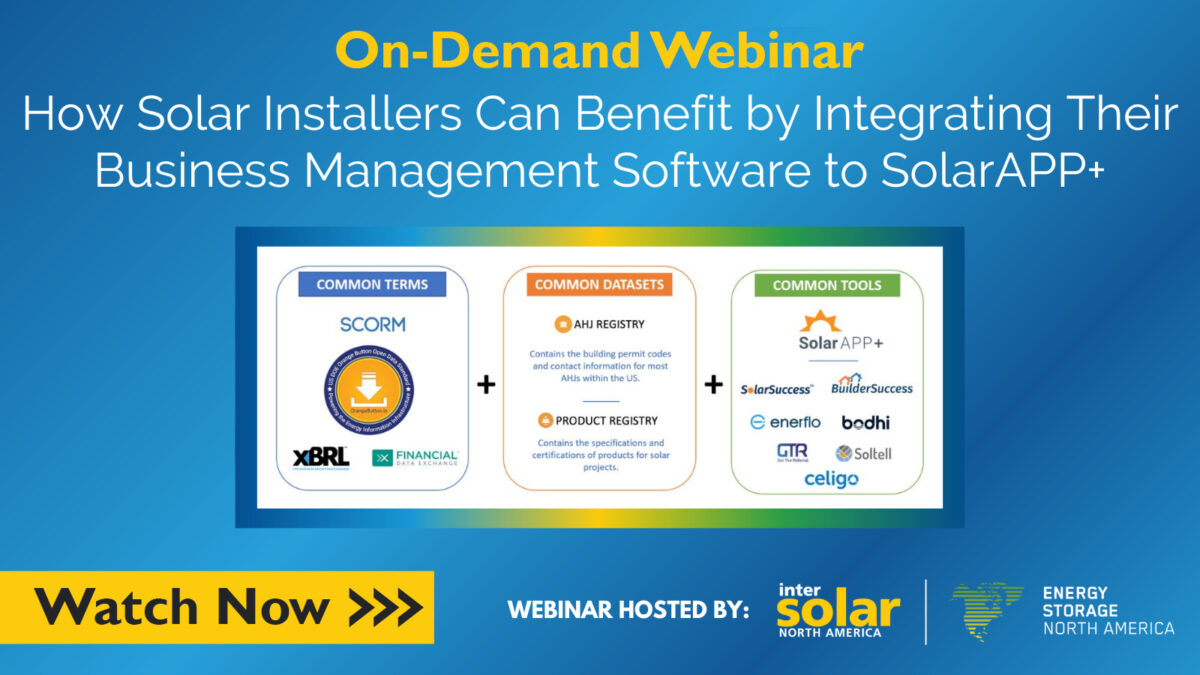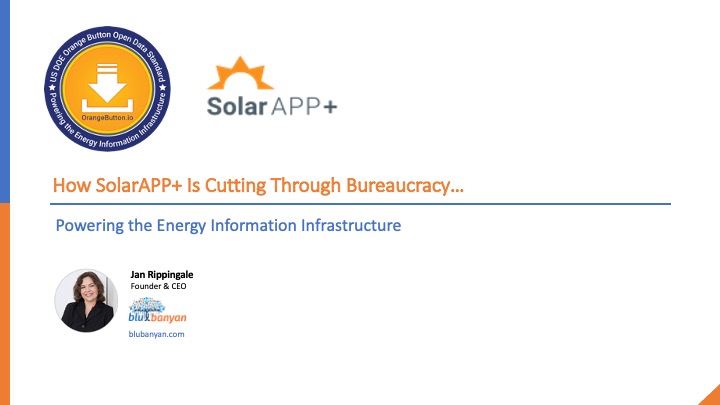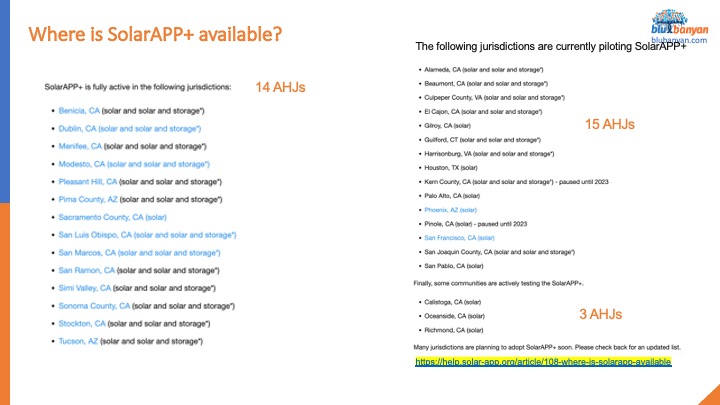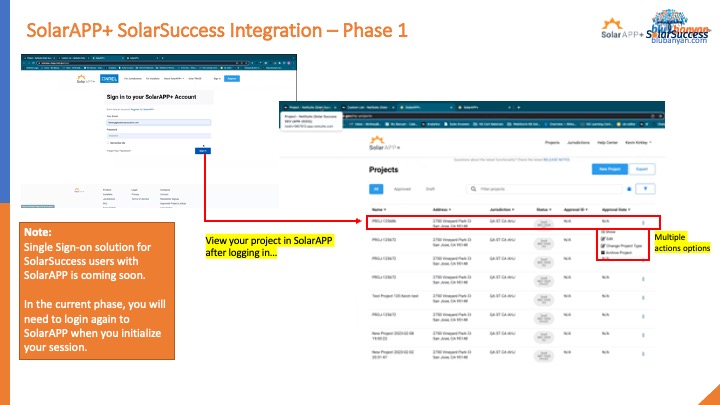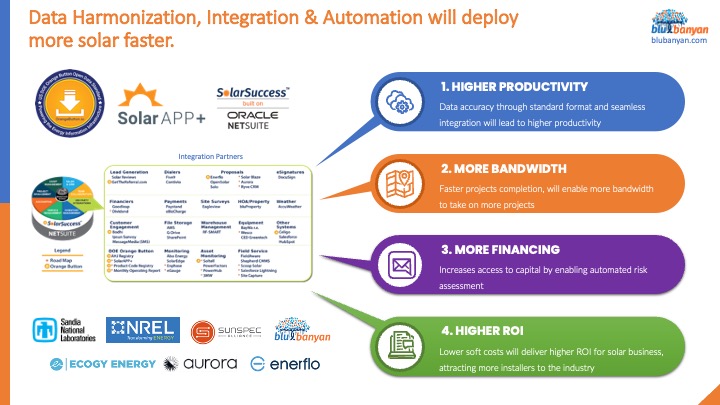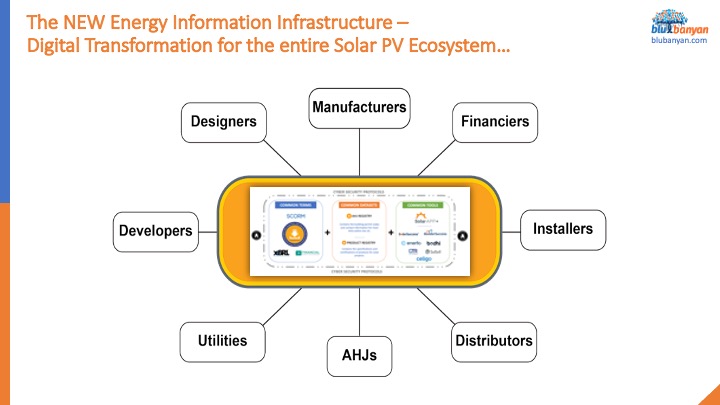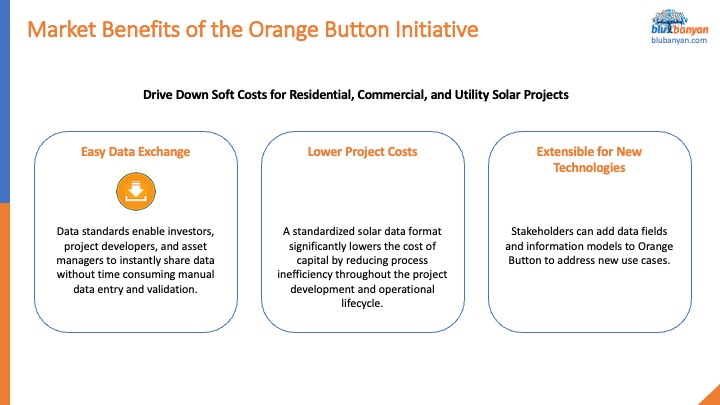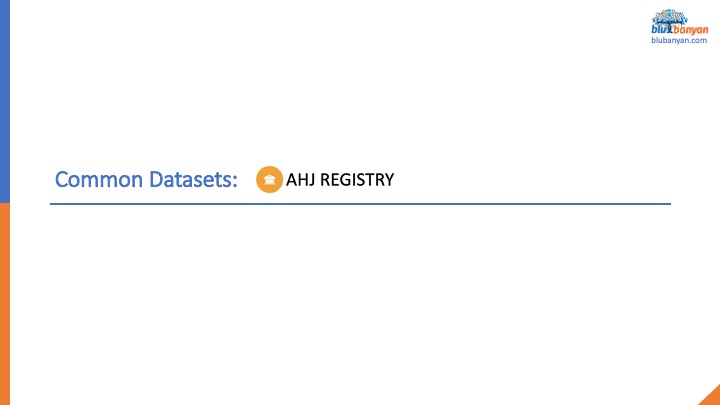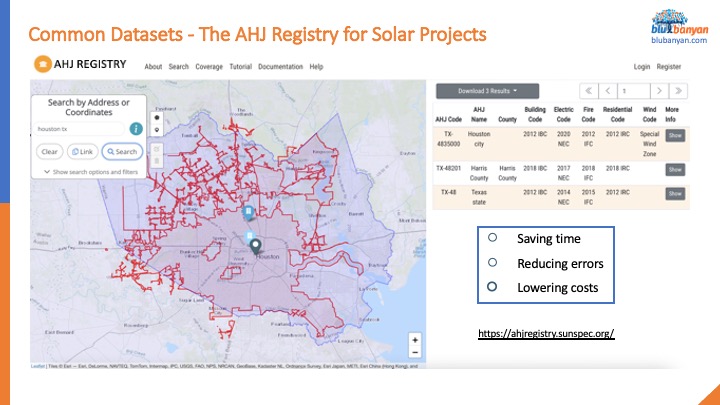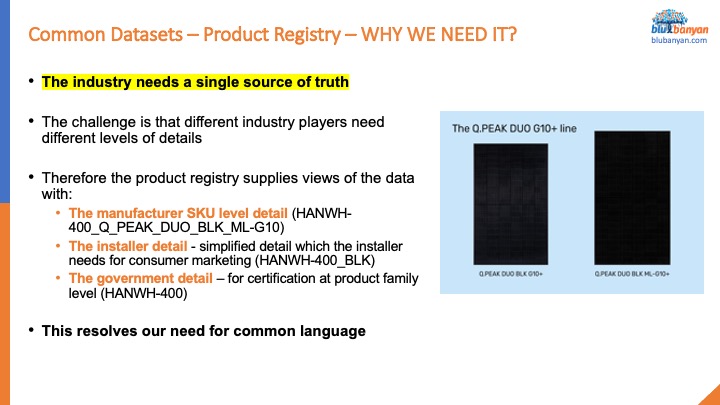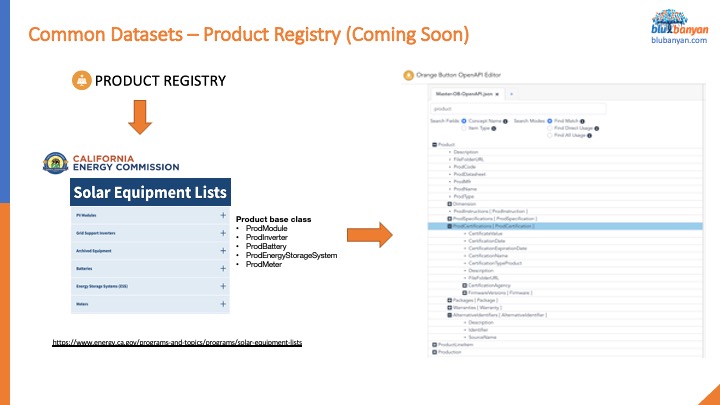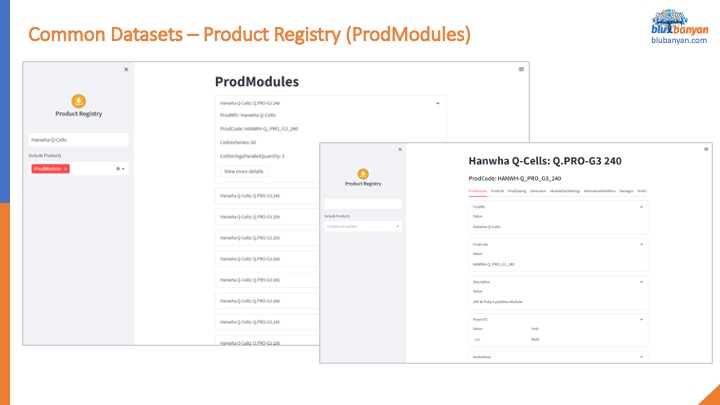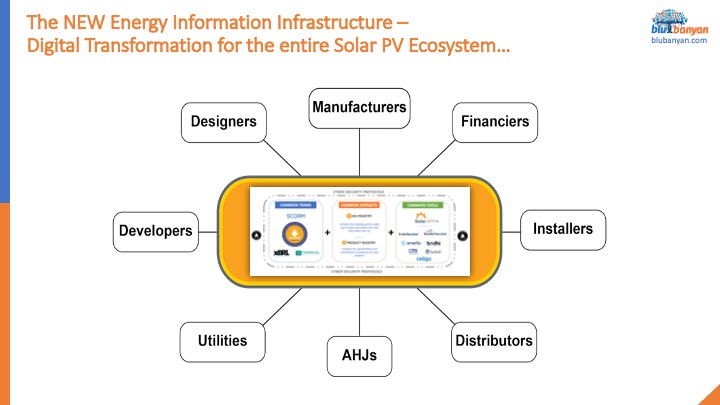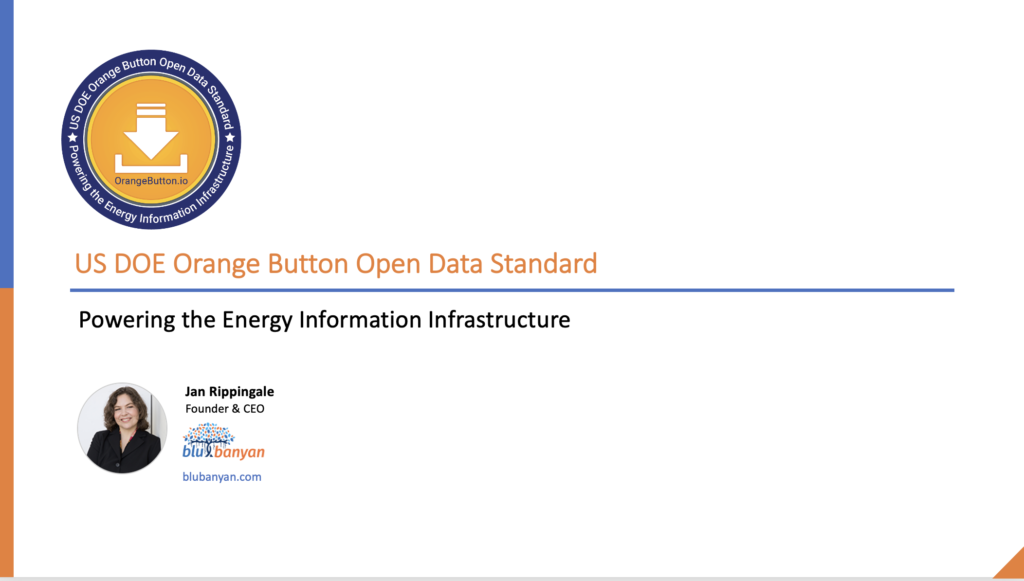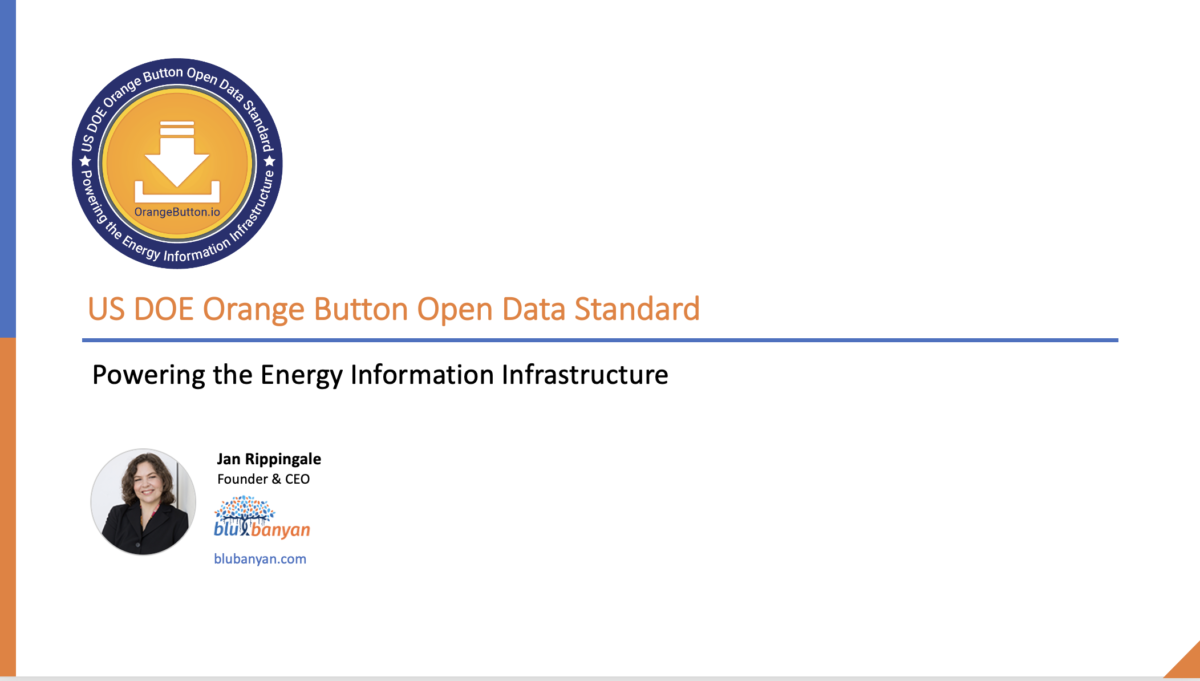And the challenge is that the different industry players need different levels of details. What different constituencies in the solar industry are willing to substitute for products versus insisting that they get exactly one particular product, has made this a very complex question because if you get too much detail, it’s too hard to maintain and manage and it doesn’t work for smaller or even, you know, reasonably size solar companies. Even large solar companies that gets too much detail.
And so, we had to figure out how to solve this.
So, what we ended up doing is we’re providing different views of the product registry. What’s in the product registry as a whole, is the full manufacturer SKU. It’s the full detail for every single product.
So, if you’ve got a Q-Cell 400, built by Hanwha, you can have five of them that are black-on-black, and five of them that might be silver. And you can see the full detail of everything that’s in there.
But what we’re going to use is, we have a group-by-API mechanism, and what we’re going to use in that grouping API for the installers, is a simplified level of detail.
They would see something like Hanwha-400-Black, and then be able to substitute all the fives, and they’ll just take the first one as what it is that they’re looking for when they place their orders to a distributor of the manufacturer. And then they’ll just explicitly say, any of these five qualify. And I’m, I’m not really concerned about what it is, as long as you can meet pricing constraints.
And that way we’ve got the right level, like a sweet spot of the level of detail the installer needs to manage when they’re receiving and attributing products to a specific job. They need to do it at this higher, simplified level of detail so that the warehouse and the inventory can all stay aligned, and we’re still giving clear instruction to the distributor/manufacturer about what is a valid and acceptable substitution, so that we can make sure that we can get supplied at the right time with what they have on hand.
So, changing what is the full detail on the product registry to a simplified detail for the solar installer, because the installers do not want that full detail, was a key element of changing how this works.
Then the government, like the CEC (the California Energy Commission), needs even a lower level of detail. They are working at things like the Hanwha 400. They just want to see that this product line in general has the required certifications. And so, it’s getting referenced and CEC listed based on even a simpler view of what is available for that product.
And so, by accommodating all of these in a way that we can work with them automatically, and get the full detail where you need it was the solution that we needed to get the product registry actually adopted and generally referenced by a broader audience.
So, this has resolved our need for common language. It is relatively simple and took a little while to think about it, and a lot of consensus building to get everyone to understand how they play together.

